
Learn how you can build your compassion and collaboration skills in this course. Footage: pexels.com
- Subject:
- Business and Communication
- Communication
- Psychology
- Social Science
- Material Type:
- Lesson
- Author:
- LAPU
- Date Added:
- 06/22/2023

Learn how you can build your compassion and collaboration skills in this course. Footage: pexels.com
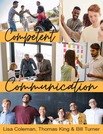
This is both a human communication and public speaking text for the general education course.
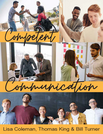
This is both a human communication and public speaking text for the general education course.

This course aims to develop negotiation skills by active participation in a variety of negotiation settings, and a series of integrative bargaining cases between two and more than two parties over multiple issues. Ethical dilemmas in negotiation are discussed at various times throughout the course.
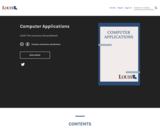
This course focuses on both theoretical knowledge and hands on application projects. The course will prepare students to not only utilize Microsoft Word, Excel, PowerPoint, and Access software, but will also to be able to translate this knowledge to other similar application software commonly used in industry.
Chapter 1: Computers and Operating Systems - Hardware
Chapter 2: Computers and Operating Systems - Software
Chapter 3: Computers and Operating Systems - Security
Chapter 4: Processing Software - Concepts
Chapter 5: Processing Software - Formatting & Editing Techniques
Chapter 6: Processing Software - Inserting
Chapter 7: Processing Software - Other Features
Chapter 8: Presentations - Creating & Editing
Chapter 9: Presentations - Enhance
Chapter 10: Presentations - Add Media & Animation
Chapter 11: Spreadsheets
Chapter 12: Database Software - Database Objects
Chapter 13: Database Software - Querying a Database
Chapter 14: Database Software - Creating Reports & Forms
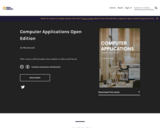
Short Description:
This course will introduce the student to Microsoft Excel.
Long Description:
This textbook was written for a community college introductory course in spreadsheets utilizing Microsoft Excel. While the figures shown utilize Excel 2019, the textbook was written to be applicable to other versions of Excel as well. The book introduces new users to the basics of spreadsheets and is appropriate for students in any major who have not used Excel before. This textbook includes instructions for Excel for Mac also.
Word Count: 65627
(Note: This resource's metadata has been created automatically by reformatting and/or combining the information that the author initially provided as part of a bulk import process.)
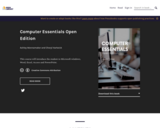
Short Description:
This course will introduce the student to Microsoft windows, Word, Excel, Access and PowerPoint.
Long Description:
This textbook will introduce the student to Microsoft windows, Word, Excel, Access and PowerPoint. The text covers basic concepts of creating word processing, spreadsheets, databases and presentation materials for the workplace.
Word Count: 26424
(Note: This resource's metadata has been created automatically by reformatting and/or combining the information that the author initially provided as part of a bulk import process.)
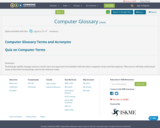
Technology rapidly changes and as a result users are expected to be familiar with the latest computer terms and descriptions. This source will help understand some of the latest terminology used in the industry today.
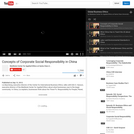
Liu Baocheng, executive director of the Center for International Business Ethics, talks with Kirk O. Hanson, executive director of the Markkula Center for Applied Ethics, about what businesses owe to the larger community. In China, Liu explains, businesses think about the Three P's: Responsibility for People, Planet, and Profit.

Lecture notes on limitations of the value at risk model, and conditinal value at risk models for financial risk management

This is a review created to assist in providing an applicable experience through the lens of Conflict in Groups a Communications topic.
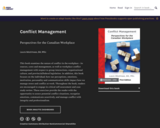
Perspectives for the Canadian Workplace
Short Description:
This book examines the nature of conflict in the workplace - its sources, costs and management, as well as workplace conflict management with respect to group interactions, organizational culture, and provincial/federal legislation. In addition, this book focuses on the individual; how our perceptions, emotions, motivation, personality and communication skills impact how we manage stress and conflict at work. Throughout the book, readers are encouraged to engage in critical self-assessment and case study review. These exercises provide the reader with the opportunity to assess potential conflict situations, recognize emotions, communicate assertively, and manage conflict with integrity and professionalism.
Long Description:
This Open Educational Resource (OER) is a custom publication for students enrolled in PSYC-6006: Conflict Management.
In the first half of the book, we will examine the nature of conflict in the workplace – its sources, costs and management. We will also briefly examine workplace conflict management with respect to group interactions, organizational culture, and provincial/federal legislation.
During the second half of the book, the focus will be on the individual; how our perceptions, emotions, motivation, personality and communication skills impact how we manage stress and conflict at work.
Throughout the book, you will be encouraged to engage in critical self-assessment and case studies. These exercises will provide you with the opportunity to assess potential conflict situations, recognize your emotions, communicate assertively, and manage conflict with integrity and professionalism.
Word Count: 168804
(Note: This resource's metadata has been created automatically by reformatting and/or combining the information that the author initially provided as part of a bulk import process.)

Do you know how to resolve conflicts in your personal and professional life? Do you act as a mediator between different parties in conflicts? Learn how to assess and address situations of conflict in this micro course.
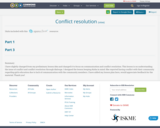
I have slightly changed from my preliminary lesson idea and changed it to focus on communication and conflict resolution. This lesson is on understanding the issue of conflict and conflict resolution through dialouge. I designed the lesson keeping Aisha in mind. She reported having conflict with their community regarding girls education due to lack of communication with the community members. I have added my lesson plan here, would appreciate feedback for the material. Thank you!
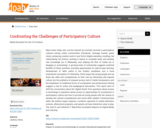
Many teens today who use the Internet are actively involved in participatory cultures—joining online communities (Facebook, message boards, game clans), producing creative work in new forms (digital sampling, modding, fan videomaking, fan fiction), working in teams to complete tasks and develop new knowledge (as in Wikipedia), and shaping the flow of media (as in blogging or podcasting). A growing body of scholarship suggests potential benefits of these activities, including opportunities for peer-to-peer learning, development of skills useful in the modern workplace, and a more empowered conception of citizenship. Some argue that young people pick up these key skills and competencies on their own by interacting with popular culture; but the problems of unequal access, lack of media transparency, and the breakdown of traditional forms of socialization and professional training suggest a role for policy and pedagogical intervention. This report aims to shift the conversation about the "digital divide" from questions about access to technology to questions about access to opportunities for involvement in participatory culture and how to provide all young people with the chance to develop the cultural competencies and social skills needed. Fostering these skills, the authors argue, requires a systemic approach to media education; schools, afterschool programs, and parents all have distinctive roles to play.
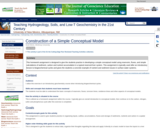
This homework assignment is designed to give the students practice in developing a simple conceptual model using reservoirs, fluxes, and simple calculations of sediment, carbon and nutrient accumulation in a typical reservoir/river system. This assignment is typically used after an introductory lecture to biogeochemical cycles and gives the students a concrete example of nutrient and sediment issues in surface water systems.
(Note: this resource was added to OER Commons as part of a batch upload of over 2,200 records. If you notice an issue with the quality of the metadata, please let us know by using the 'report' button and we will flag it for consideration.)
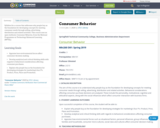
Syllabus for a course that addresses why people buy as the foundation for developing concepts for meeting consumer needs through selling, advertising, distribution and related activities. This course uses an open textbook, Consumer Behavior, from the National Programme on Technology Enhanced Learning (NPTEL).

This course provides a solid understanding of consumer decision-making and how new products and services are developed, especially given the rapid pace of innovation and regulatory change, to help students succeed in consumer finance today. Specific examples will be drawn from retirement saving products, credit cards, peer to peer lending, cryptocurrencies, and financial advising.

Unit that includes lessons on your money & social media, advertisements & dark patterns, comparison shopping, identity theft, scams & fraud.

The onset of the COVID-19 pandemic changed consumer spending habits. The January 2021 issue of Page One Economics® reviews how people substituted meals purchased at restaurants with meals cooked at home. Also, people traveled less and the demand for hotel services decreased. As a result, both employment and prices declined in the leisure and hospitality industry.